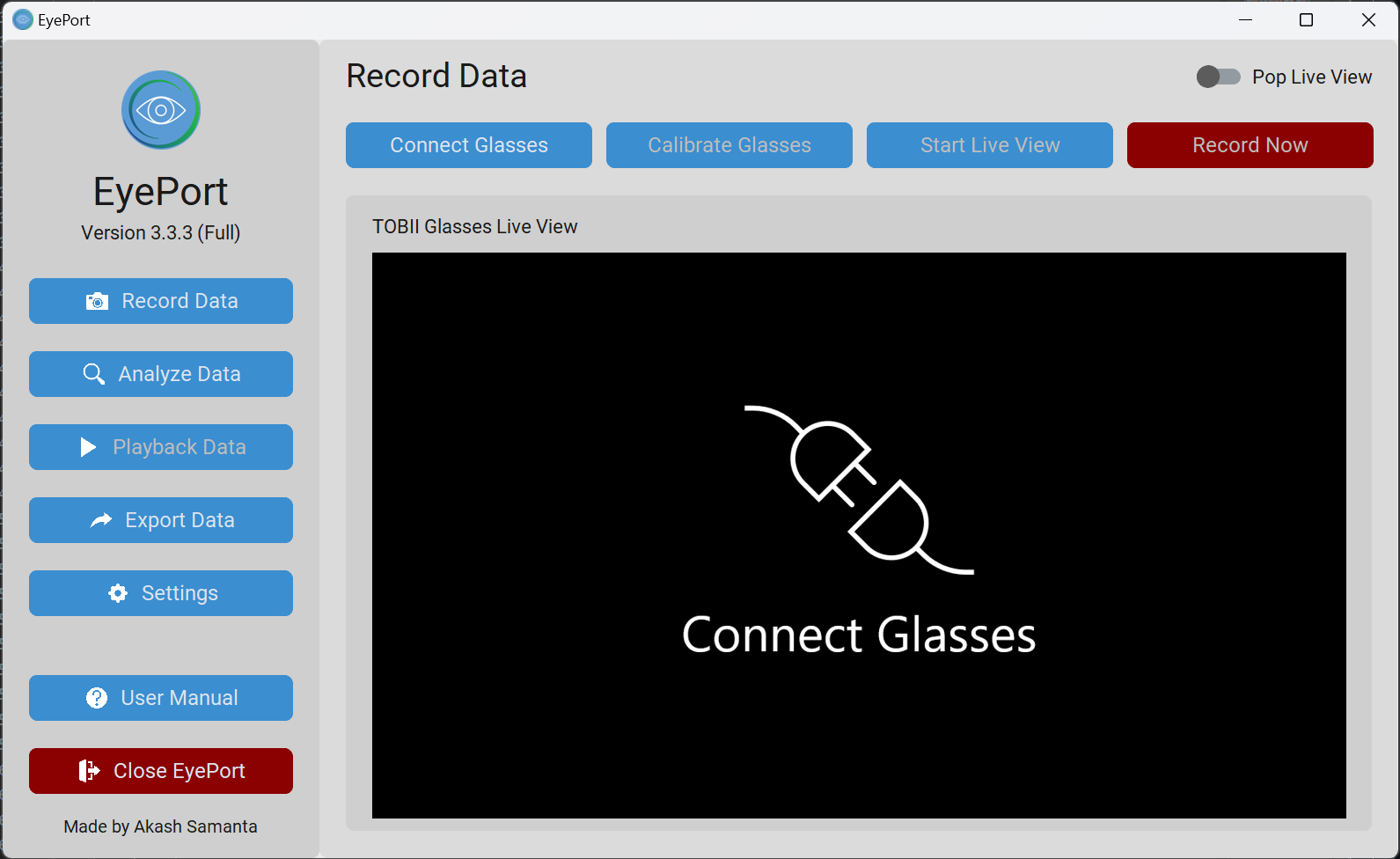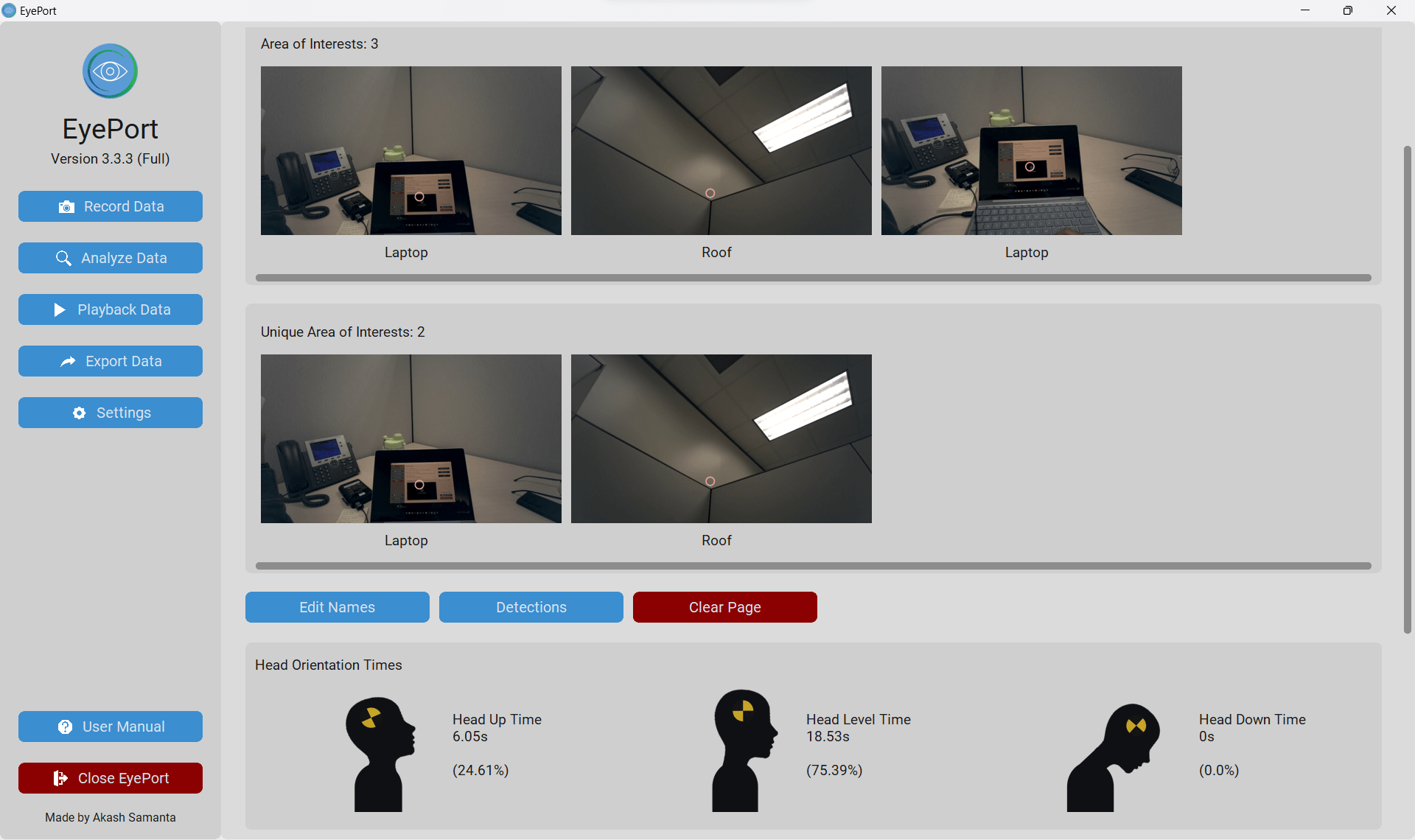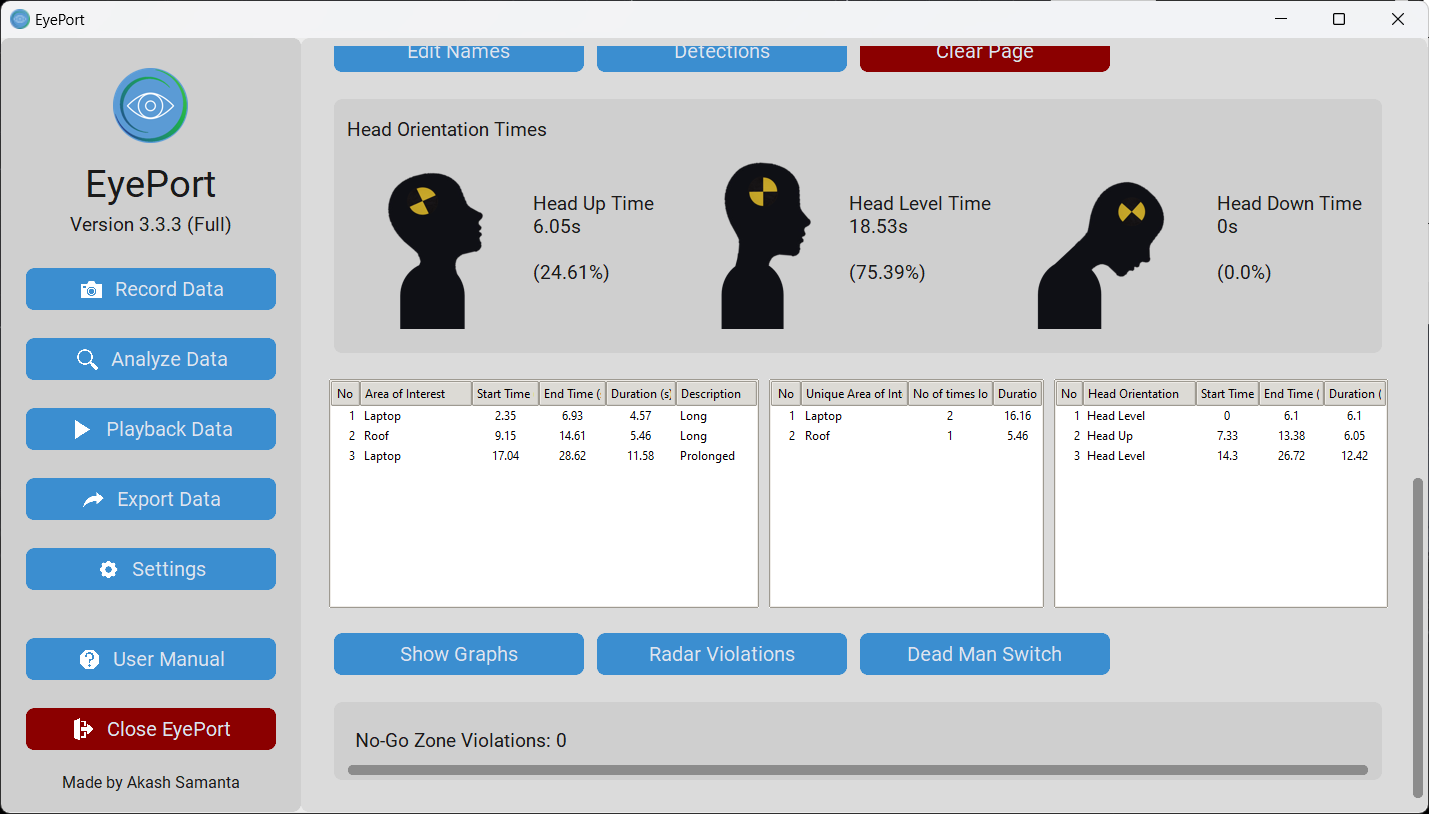
Eye Tracking
Eye-Tracking measures gaze point or eye motion relative to the head. Modern Eye-Trackers, wearable or
not,
include multiple sensors. Tracking data finds applications in human behavior analysis and predictions.
I developed EyePort, an automated system for processing eye-tracking data from TOBII Pro Glasses 3. It
incorporates algorithms for recording, analyzing, and exporting data. EyePort evolved to serve as a
safety
assessment tool and instructor aid in the maritime industry, extending its
applications beyond FRAM Modelling.
Download EyePort
Click the download button below to download directly. An additional resource is needed for Object Detection Module to work. You can find it on GitHub. EyePort is not to be resold for any commercial purpose(s).

Downloaded - 41 times
Recording Data
EyePort is designed for the TOBII Pro Glasses 3. You can connect and record from the glasses from EyePort directly.

The official API for connecting the glasses can be found here. The data collected are in the form of Gaze 2D Coordinates, Gaze 3D Vectors, and IMU measurements which are accessed locally from the glass SD Card.
EyePort creates an Excel file to hold these data. Some cases, this extraction is all you need. But EyePort can do a lot more; these are discussed in the next section.
Analyzing Data
Using a simple timing and tolerance algorithm based on Gaze 2D Coordinates, EyePort can quickly determine Areas of Interest (AOIs). The detections are then cropped into smaller squares of images (size can be adjusted by user) and then matched against each other to uniquely identify common or similar looking objects (done using image_similarity_measures). Matrix calculation and Single integration calculations were dropped since EyePort V3.0.0.
The detections can be identified using an pre-trained ImageAI model. For this identification, the YOLO (You look only once) algorithm was used. Details about this algorithm can be found here. EyePort can detect General Objects, Ships and Icebergs, or VISTA Diesel Engine.

EyePort also calculates Head Orientation Times, Radar Violations, No-Go Zone Violations, Dead Man Switch Trigger. These come from the glass data of AOI analysis. The data can be viewed in graphs and tables. It can also be exported in various formats discussed in the next section. Detailed explanation can be found here.

Exporting Data
EyePort V2.0.0 was mainly catered to serve DynaFRAM which is a FRAM Model Visualizer. To learn more about FRAM and FRAM Modelling, click here. EyePort creates partial input files containing eye-tracking data for DynaFRAM. You can download DynaFRAM using the redirect button below.
EyePort V3.0.0 focuses on expanding the applications of eye-tracking. It can be used as an safety assessment tool and an instructor aid for the maritime industry. EyePort exports in XLSX, CSV, XMFV formats.

Limitations
Some limitations include:
- - Needs Lighting and 500+ samples for Good Image Detection
- - Only works with TOBII Pro Glasses 3
The unrestrained motion (where user can freely move around along with rotating head) limitation was overcome in later builds of EyePort. This was possible because IMU sensor data was no longer the primary source of tracking.
Some Thoughts
Thank You for this wonderful opportunity. I was privileged to work with Memorial University and the Fisheries and Marine Institute for 8 months. It was super cool to visit the full bridge motion simulators at Marine Institute. I got exposure to the professional working environment, learnt a lot of new programming skills, and of course had fun with Eye-tracking!






